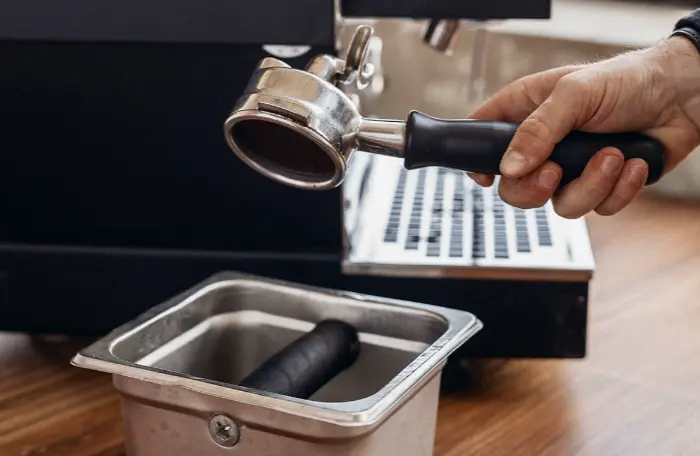Espresso is a concentrated coffee beverage known for its rich flavor and velvety crema. Today, espresso machines make the process quick and consistent. But how was espresso made before these machines existed? The answer lies in early brewing methods that laid the foundation for modern espresso. This article explores the history, techniques, and tools used to create espresso-like coffee long before machines took over.
The Origins of Espresso
Espresso, as we know it today, was first developed in Italy in the early 20th century. However, the concept of strong, concentrated coffee dates back centuries. Before the invention of espresso machines, people used manual brewing methods to achieve a similar result.
The word “espresso” comes from the Italian term meaning “pressed out” or “expressed.” This refers to the process of forcing hot water through finely-ground coffee under pressure. Early methods didn’t have the same mechanical pressure as modern machines, but they still produced strong, flavorful coffee.
Early Coffee Brewing Methods
Before espresso machines, people relied on several brewing techniques to make strong coffee. These methods didn’t produce true espresso, but they were the closest alternatives available.
The Turkish Ibrik (Cezve)
One of the oldest ways to brew strong coffee was using a Turkish ibrik, also called a cezve. This small pot, usually made of copper or brass, was used to boil finely ground coffee with water and sugar. The mixture was heated until it foamed, then removed from the heat before boiling over. The result was a thick, concentrated coffee with a layer of grounds at the bottom. While not espresso, it was one of the earliest forms of strong, unfiltered coffee.
The Moka Pot (Stovetop Espresso Maker)
Invented in 1933 by Alfonso Bialetti, the Moka pot was a breakthrough in home coffee brewing. It used steam pressure to force water through coffee grounds, producing a strong, espresso-like drink.
The Moka pot consists of three chambers: a bottom chamber for water, a middle basket for coffee grounds, and a top chamber for the brewed coffee. When heated, steam pressure pushes water through the grounds, extracting flavors more intensely than drip methods. Though not a true espresso machine, the Moka pot was the first device to mimic espresso’s pressure-based extraction at home.
The Neapolitan Flip Coffee Pot
Another early method was the Neapolitan flip coffee pot, popular in southern Italy. This device had two chambers separated by a filter containing coffee grounds. Water was boiled in the lower chamber, then the pot was flipped to let the hot water drip through the grounds.
This method didn’t use pressure, but it produced a stronger brew than regular drip coffee. It was a step toward the concentrated coffee that would later become espresso.
Manual Pressure Brewing Before Machines
Before electric and steam-powered espresso machines, people experimented with manual pressure methods to intensify coffee extraction.
The Espresso Pistol
In the late 19th century, inventors tried creating manual espresso devices. One such invention was the “espresso pistol,” a lever-operated device that used hand pressure to force hot water through coffee. These early attempts were crude compared to modern machines, but they proved that pressure was key to extracting rich, concentrated coffee.
The Lever Espresso Machine Prototypes
The first true espresso machines, developed in the early 1900s, were lever-operated. Baristas manually pulled a lever to generate pressure, forcing water through the coffee puck. These machines were the direct ancestors of modern espresso makers. Before they became widespread, people relied on simpler methods like the Moka pot or Turkish ibrik.
The Role of Coffee Grinding
Without proper grinding, even the best brewing methods fail. Before electric grinders, coffee was ground by hand using various tools.
Mortar and Pestle
One of the oldest grinding methods was the mortar and pestle. People crushed roasted coffee beans into a fine powder, though achieving consistent fineness was difficult.
Manual Burr Grinders
Later, hand-cranked burr grinders allowed for more uniform grinding. These devices used two abrasive surfaces to crush beans into even particles, essential for proper extraction. A fine grind was crucial for methods like the Turkish ibrik and Moka pot, as it maximized flavor extraction without machines.
Boiling vs. Pressure Extraction
A key difference between early methods and true espresso is the use of pressure.
Boiling Methods (Turkish Coffee)
Boiling coffee, like in the Turkish ibrik, extracts flavors through prolonged heat. This creates a strong but often bitter brew, as over-extraction is common.
Pressure Methods (Moka Pot & Early Machines)
Pressure-based methods, like the Moka pot, mimic espresso by forcing water through grounds quickly. This reduces bitterness and enhances crema-like foam. Early manual pressure devices were the bridge between boiling and modern espresso machines.
The Evolution of Espresso Machines
Understanding early brewing methods helps appreciate how espresso machines evolved.
The First Espresso Machine (1901)
Luigi Bezzera patented the first espresso machine in 1901. It used steam pressure to speed up coffee extraction, catering to busy cafes.
The Lever Machine (1940s)
Achille Gaggia’s 1940s lever machine introduced higher pressure, creating the signature espresso crema. This was the birth of modern espresso.
Conclusion
Before espresso machines, people used manual methods like the Turkish ibrik, Moka pot, and early pressure devices to make strong coffee. These techniques laid the groundwork for today’s espresso culture. While they didn’t produce true espresso, they were the best alternatives of their time.
Understanding these historical methods gives us a deeper appreciation for the innovation behind modern espresso machines. From hand-grinding beans to manual pressure devices, the journey to perfect espresso was long and inventive.
Today, we enjoy espresso with just the push of a button, but the legacy of early brewing lives on in every cup.
Related topics:
How to Use Nespresso VertuoPlus
What is the Best Espresso Powder for Baking?


